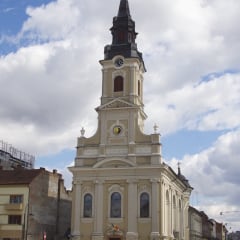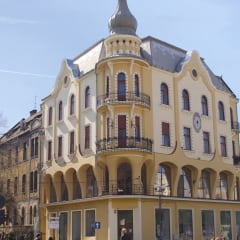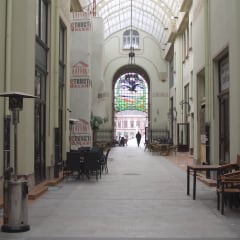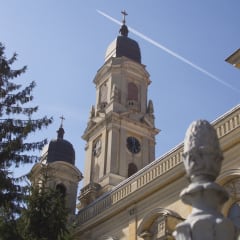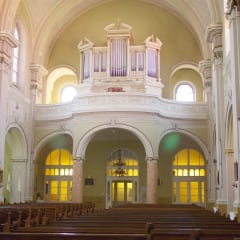The city Oradea — Romania’s undiscovered jewel
published on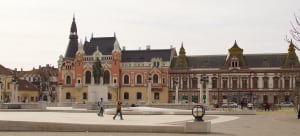
A walk along the river Crișul Repede is a must if you find yourselves in the city Oradea. Get lost in the historic city centre, go to the theatre and spend some time with the locals.
Oradea is one of the most beautiful cities Romania has to offer. The city was first mentioned in 1113 and was once known by its Latin name Varadinum; However, its origins are Draco-Roman. Archeological discoveries show that there were Roman and Dacic settlements around Băile Felix. Later, Romanians, Hungarians, Turks, Austrians and even Jews contributed to the development of the city and its society.
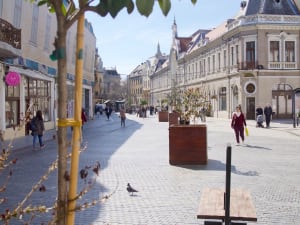
We were surprised by Oradea’s beautiful old town, the Baroque and Art Nouveau buildings and the old citadel further away from the centre. The city Oradea is also the only town in Romania that is part of the Réseau Art Nouveau Network.
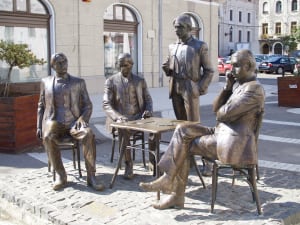
The city Oradea had been on our list of cities to visit in Romania for quite some time. Our work-load was, however, so big, that we had to wait for a bit more free time. When the timing was right, it was also Deian’s birthday, so Alina decided to surprise him with a change of scenery. We packed our Tortuga Air backpacks, slept a few hours, woke up and decided to just walk to the train station at 4:30 in the morning to catch the first train to from Timișoara to Oradea.
Our Airbnb* host Lucian, his girlfriend and their dog, Didi, awaited us and we left our backpacks quickly to start exploring the city Oradea.

On our first day in Oradea, we worked on the river bank of Crișului Repede. Right below a majestic tree was a wooden table, that was perfect to pack out your laptop and get some work done for a few hours.
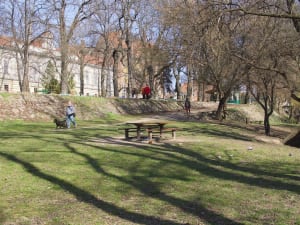
Once we’d finished our work, we started exploring the city centre, our chins up high, looking at the beautiful buildings in Piața Unirii (Union Square) from top to bottom.
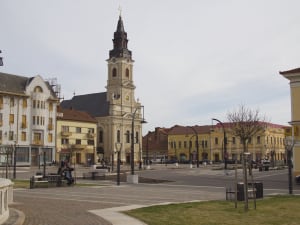
An interesting building sparked our interest: Biserica cu Lună (Church with Moon) was built between 1784 and 1790. Nothing spectacular but if you look closely, you’ll notice a unique mechanism that you won’t find anywhere else in Europe: A sphere sits right inside the churches’ tower; one half is painted golden, the other black — and it moves according to the Earth’s rotation, displaying the phases of the Moon.
Another interesting church is Biserica Sfântul Ladislau, where you can take a look at the oldest altar in the city Oradea, from 1730. The church itself is quite simple, but it integrates beautifully into the landscape of the Union Square; we liked its exterior a lot.

Other important buildings: The town hall, built in the Renaissance style after the project from renowned architect Kálmán Rimanóczy, and Palatul Episcopiei Greco-Catolice (The Palace of the Greek-Catholic Bishopric), finished in 1905. If you’re not afraid of heights, go up the Town Hall’s tower and enjoy a beautiful view over the city Oradea.
On the other end of the square is Pasajul Vulturul Negru (The Passage of the Black Eagle), a commercial building with three entrances, built in the Art Nouveau style. It’s without a doubt the cities most well-known monument.
Later, we walked around the pedestrian street Calea Republicii, which is full of shops, cafés, restaurants and beautiful buildings, some of which had been under construction when we visited. We had a bite to eat, took some pictures and rested for a bit before moving on to Palatul Moskovits (Palace Moskovits). This building has been designed by Kálmán Rimanóczy jr. and finished in 1905. It will definitely spark your interest because it has very curvy forms and is decorated with different faces and ceramics.
We also entered the Roman-Catholic church Sfântul Spirit (Holy Spirit), which was built between 1732 and 1748. However, it has suffered a lot of modifications. After it had been built in the Baroc style, it got a new look and a tower; later, it was rebuilt in the style of the Neo-Renaissance, closely following the project of Kálmán Rimanóczy jr. The interior is quite simple and painted in charming, bright colours; there are a few golden elements and sacred images, but nothing out of the ordinary.
Another building we adored was the one housing Teatrul de Stat Regina Maria (The State Theatre Regina Maria) and Teatrul Maghiar Szigligeti (The Hungarian Theatre Szigligeti). Construction has been finalised around 1900. The building has neoclassical elements and on the inside, you’ll be greeted by the charming neobaroque style. Right next to the theatre is Palatul Sztarill (Palace Sztarill), currently housing Hotel Astoria. It’s one of the newer buildings Oradea prides itself with (1902–1906).
Many years ago, the Hungarian poet Ady Endre used to meet with his friends in the café on the ground floor.
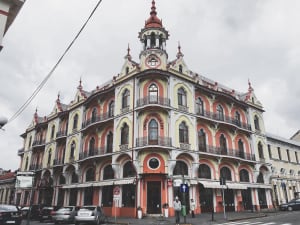
In the evening, we decided to see the play Îndrăgostiți din Ancona (Lovers from Ancona) at Teatrul de Stat Regina Maria. The actors were phenomenal and improvised quite a lot, adapting their lines based on the feedback provided by the viewers. We were impressed by the performance and the play itself, a great musical comedy.

We liked the play so much that we came back the following evening to watch Clasa Noastră (Our Class) by Teatrului Maghiar Szigligeti. This play was based on real-life events, the genocide of the polish town Jedwabne. Polish citizens have killed around 1,500 Jews, burning them alive in a barn. The play tells the story of ten children and their evolution through the 20th century.
The plays of Teatrului Maghiar Szigligeti are subtitled in Romanian.

